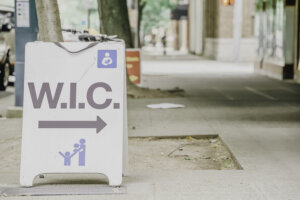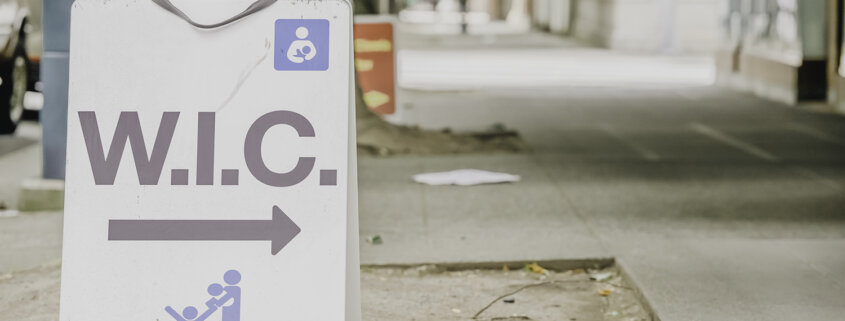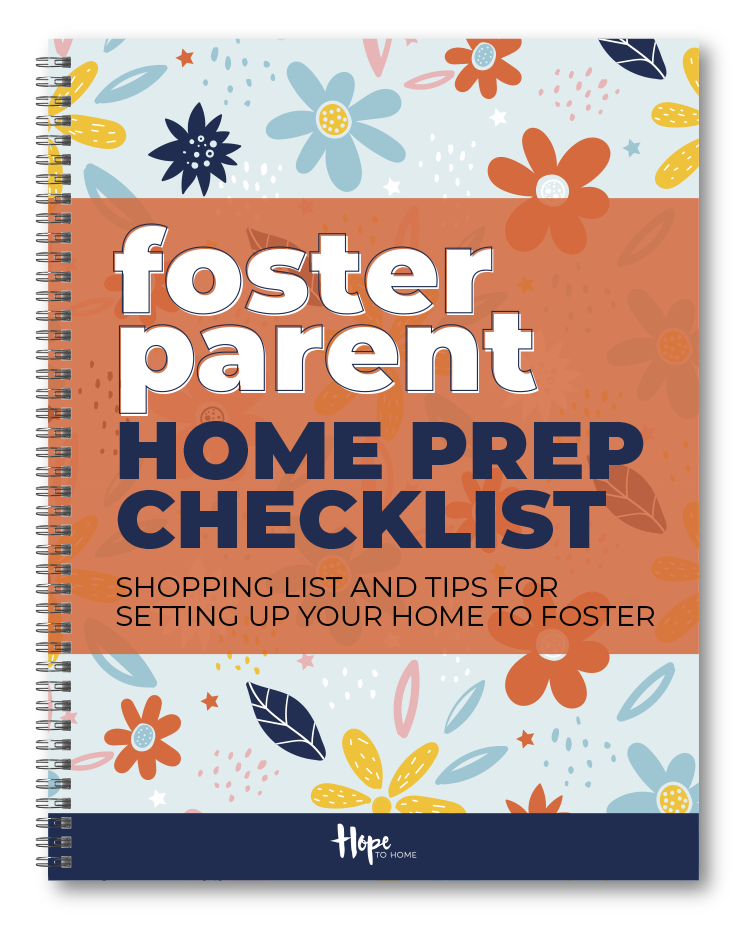WIC for Foster Children: 5 Key Tips for Utilizing WIC
The topic of using WIC for foster children comes up often in fostering Facebook groups. In short, WIC is a government program that provides free food or formula for low-income families and foster kids. See the definition below. Some people have had terrible experiences and some that tolerate using WIC. You just don’t see people rejoicing using the WIC program, but there are some great benefits to using it. In case you are unsure what WIC even is, here is how WIC is defined by Food and Nutrition Services: www.fns.usda.gov.
The Special Supplemental Nutrition Program for Women, Infants, and Children (WIC) provides federal grants to states for supplemental foods, health care referrals, and nutrition education for low-income pregnant, breastfeeding, and non-breastfeeding postpartum women, and to infants and children up to age five who are found to be at nutritional risk.
DO WE REALLY NEED IT?
Our first placement was 1 and 2 year old sisters, you can read about here: A tale of two sisters. We were beyond overwhelmed just with toddlerhood again and the many appointments that we had to take them to. Our caseworker advised us to call the WIC office immediately so we can get milk and some food. My husband and I both thought that if we signed up for WIC, we would be taking food away from someone else that may need it. That another family would be denied because we, as foster parents, were able to utilize. So we didn’t.
Baby Tree is Now Available!

Discover the heartwarming tale of Baby Tree, perfect for children who have come into foster care early in their lives. This inspiring story offers hope and support to foster and adopted children, their caregivers, and any child dealing with loss, reminding them that God has a plan for their future. Click to buy and inspire young readers with a message of love, resilience, and community!
Our Early Intervention worker called us, and she asked about WIC, and I told her about our thought of not using it. She said we are not taking it away from others. There is not a set limit. Foster children automatically qualify because they are at nutritional risk, and the income goes off of their income, not ours since the kids are in state care.

WIC office how to utilize WIC as a foster parent.
OUR FIRST EXPERIENCE USING WIC.
OK, that made sense, and it would be great to get some help with one of our toddlers was lactose intolerant. I called the WIC office and set up an appointment for the afternoon, so I didn’t have to miss too much work. The first appointment I was supposed to bring the girls, but after waiting for about an hour, I finally went up to the window and got everything filled out. She told me that because the birth family already had the vouchers through March, and haven’t returned them, that we wouldn’t be able to get vouchers until April 1. It was the beginning of February at that point, so it would only be a few months out.
The way the system is set up, it issues vouchers 3 months at a time. So if you are placed with a foster child at the beginning of those 3 months, and the birth parents do not give or return the vouchers, you will have to wait. However, by October 2020, all WIC offices in the US are supposed to be switching over to EBT cards, so hopefully, this will make things easier to stop the card or make a monthly deposit. Our area WIC in Illinois is starting the EBT cards as of June 1, and I have a June appointment with my Foster daughter. I will let you know how that all works out!
It has been touch and go with bringing in my foster children to the WIC office. Meaning, sometimes the appointments are speedy and not long of a wait; other times, it is excruciatingly long. The longest I have waited was an hour and twenty minutes. That was just to get in to be seen. It was another 45 minutes to have the girls examined, and talk to a nutritionist. I was about to cry or leave or leave and cry, but then I realized I would just have to come back. I started making my appointments for the first thing in the morning. That helps a lot.
WHAT DO YOU RECEIVE with WIC for FOSTER CHILDREN?
To give you an idea of what types of foods you will receive per month for your child, I made a breakdown of what we receive in Illinois. Every state may fluctuate on how it is distributed or what types of foods, but it follows a national standard so it should be reasonably close. Also, they will make accommodations for dairy intolerant or out of the ordinary formula, but you will need a pediatrician note. At your first doctor’s appointment with your foster kids, if there are any special dietary needs, make sure the doctor writes it on a letter that you can bring to WIC and daycare if you utilize daycare.
For example, our current foster daughter is intolerant to dairy. It goes right through her as does juice. I had our pediatrician write a note for WIC and our daycare about her needs. WIC has contracts with specific companies, and the formula they started my foster daughter in the hospital was not the soy brand that WIC is contracted with. It took her some time to adjust to the switch of brands, but she did.
- Childs Age: 0-5 months, formula.
- Childs Age: 6-11 months, formula, baby cereal, and baby food.
- Childs Age: 1-2 years, milk, juice, cereal, eggs, set dollar amount for fruits and veggies, beans, oatmeal (rice or tortillas).
- Childs Age: 2-4 years, is the same as 1-2 with potentially additional amounts and items like bread and pasta.
5 KEY TIPS WHEN USING WIC for your FOSTER CHILDREN.
- Call your closest WIC office as soon as you can after being placed with a foster child 4 or under. WIC is only available for children up to their 5th birthday.
- Make your appointment first thing in the morning, if possible.
- Don’t be in a hurry!
- Ask when you make the appointment if you need to bring the children in. Sometimes you do, for us, it’s every 6 months. Sometimes you take an online class before picking up your vouchers.
- Remember, you do NOT need to give any financial information. Foster children automatically qualify.
SHOULD YOU USE WIC for your FOSTER CHILDREN?
Are you are on the fence about utilizing WIC for your foster child? I would urge you to do so if you have a baby 1 or under. The assistance that you will receive for formula will save you hundreds of dollars a month. If your child had special dietary needs at any age, I would also encourage you to utilize WIC. The soy milk for our foster daughter is roughly $50. a month, so that helps a lot. If you have multiple children under the age of 5, I would suggest you use it just to help a little with the grocery bill. If you have a child that is older than 1 and no dietary restrictions and you feel your time is super valuable, and you don’t have to worry about saving money on groceries, you may choose to skip. Or you can try it and see if it’s worth it.
USING WIC AT THE STORE.
Another thing I should mention is using the vouchers in the stores. This can be a traumatic event for some. I have had very demeaning cashiers and then really kind and sweet ones. It really has opened my eyes to those who utilize WIC for financial reasons alone and are not foster parents. I personally have found that Woodmans (if you have those grocery stores near you) are the very best at taking WIC vouchers. They don’t have the “digital list” like other stores. So if you get something that is on the WIC approved items list but is maybe the wrong variety or something of 100 different reasons could happen… it doesn’t matter. If the item is on the WIC list and the total is under the voucher amount, it scans through.
I am not kidding when I say that I had a cashier once shout across the store that she needed help “with one of those WIC vouchers” my face turned red, and I felt like a small child getting reprimanded about something. It was the first time I used the vouchers for my first foster children, and I thought I had all the right items. The oatmeal was not the right type (even though the paper said the “cheapest” it ended up being the store brand variety, which was not the cheapest by a few pennies). If you can experiment a little with stores, and find one with a very experienced looking cashier, stick with it!
TIP: I recently found out from my son, who works at the grocery store that yelled across the lanes about the WIC issue, that they are not allowed to do that. I told my son that allowed or not it happened, and he encouraged me next time to report the cashier to customer service. If you are made to feel bad about using WIC please nicely talk to someone at customer service. Some people may not even realize they are being offensive.
Your vouchers or EBT will have specific choices of items that you can purchase. Some stores have a tag on the shelves that say “WIC” and some don’t. Follow the guidelines you have been given precisely. If you are unsure of an item, bring them both up to the checkout, and the cashier can scan to make sure. Do not use the self-checkout. Place your WIC items on the belt before any other items and separate them by voucher if you are using them. If you are purchasing items that are not WIC items, I typically put those items AFTER my WIC items because if someone is in line behind you, they may be less annoyed with a regular order closest to them. If you are using vouchers, you will need your ID, envelope with your signature on it, and the vouchers. You will sign the voucher after the cashier scans the items. Done!
I hope this helps you and your experience using WIC!

 Hope to Home
Hope to Home


